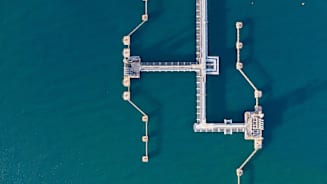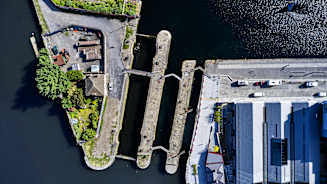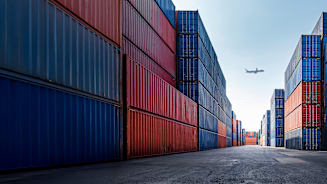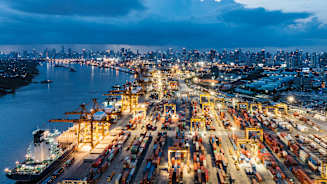3 Human Capital Recommendations for Construction Contractors Entering Asia

European construction contractors are looking with increasing interest at Asia, but to expand successfully into the region, they need to overcome key workforce and market challenges.
Key Takeaways
-
Sourcing the best team to work on a construction project in Asia can be challenging due to workforce shortages and fierce competition for specialist talent.
-
Construction contractors should be aware of regional nuances in safety standards, legal frameworks and cultural differences as they prepare to pursue projects in-region.
-
Risk transfer strategies are closely tied to human capital considerations and can impact an organization’s competitiveness in Asia, as well as its ability to secure insurance.
Construction contractors see significant opportunities to do business across Asia due to record-levels of government stimulus used to build a pipeline of mega-infrastructure projects in the region. China is forecasted to spend more than $1.5 trillion in construction over the next 15 years, while India is focusing on infrastructure development, affordable housing, smart cities and industrial projects. The Philippines, Vietnam, Malaysia and Indonesia are also expected to see a rise in construction activity due to rapid urbanization, population growth and foreign investment.
Construction contractors looking to build a portfolio in Asia should consider these three human capital strategies to support long-term success.
1. Match Specialized Expertise to Projects
When construction contractors enter new regions, determining new skillsets for planned projects is key. Through strategic workforce planning, contractors can identify existing employees with the right expertise to fill emerging roles, narrowing down which positions will require hiring external talent. During this process, they should also consider which local partners they will need to help meet labor demands for additional skillsets and in-region expertise.
Strategic workforce planning has important implications for risk transfer. “Underwriters are increasingly considering what talent is working on a construction project to ensure that contractors have people with the right experience,” says Vincent Banton, Aon’s head of Construction & Infrastructure in Asia. “Some underwriters go as far as asking for CVs of key project teams to check their experience and past records, particularly for large, complex projects with a lot of risk.”
Complex projects that require an extra level of skill and specialty can include tunneling projects such as the expansion of metro systems in Singapore. This type of large-scale complex infrastructure needs specialists who can understand the geological challenges as well as the techniques required to complete underground operations. Knowing how to successfully employ tunnel boring machines is a different concept to laying a road on a highway, for example.
Implementing a thoughtful strategy around talent is particularly important when considering current talent challenges in the construction industry. Constructing specialized facilities, especially in alignment with low-carbon building specifications, requires specialized talent — which comes at a premium. Staffing projects with qualified workers can be a struggle due to the combined impact of a generation aging out of the workforce and a younger generation opting to pursue employment in other industries.
The Bottom Line:
Use strategic workforce planning to map specialized talent needs for regional projects and demonstrate to underwriters that the right teams are in place to help reduce inherent risks in large, complex projects.
6.1%
The construction industry in east Asia is forecasted to see annual average growth of 6.1 percent between 2025 and 2028.
Source: GlobalData
Strategic workforce planning helps inform how organizations can best use their resources by investing in their existing talent in the local country and then using talent from other geographies to ensure workforce needs are met.
2. Source Productive Local Partners
Identifying local partners is crucial in helping construction contractors understand regulations and insurance requirements, while accessing in-region talent.
Hong Kong construction firms, for instance, are encountering local labor shortages across multiple roles, including human resources professionals, site engineers, quantity surveyors and safety officers. The ability to move between projects and contracts and pursue higher salaries makes retaining such talent a challenge. Meanwhile, skilled engineers in the Philippines prefer to be employed outside of the country where higher compensation is available. This creates an obstacle when sourcing local talent for large infrastructure projects in-country.
In this environment, “it's important to have local teams operating in the market that have connections with the best local recruiters, because they're going to be able to find the right people with the right requirements and experience,” says Eric Rosales, specialty broking director for Aon in the Philippines.
Partnering with a local organization who has experience in building local projects can also make construction contractors more competitive for bids. For example, if a contracting newcomer to Hong Kong needs to demonstrate that it has acquired adequate and sufficient experience, it may be granted a probationary license from the government. However, the newcomer could also enter a joint venture with another contractor (local or international) who already has the required government license to build certain projects.
Strong, local joint venture partners can also provide insight on regulations, political considerations, subcontractor issues and potential project pitfalls.
Before collaborating, however, construction contractors should examine the potential partner’s loss records. Poor loss records can mean higher premiums or lead to difficulties in securing insurance coverage. They could also prevent a construction contractor from winning new bids for projects. In Hong Kong, for example, the government scores contractors for safety and tracks industrial accidents. A poor accident record may prevent a contractor from tendering government jobs.
By understanding regional safety requirements and ensuring that both they and their local partners have a robust intelligence of losses, construction contractors not only help unlock better premium and capacity availability, but also access business opportunities.
The Bottom Line:
It's important to understand the market a contractor is entering and find the right local talent partners to support workforce goals. This will help make contractors more competitive as they bid on projects and enable them to find long-term success in the region.
3. Employ Holistic Global Mobility Strategies
A relocated employee’s emotional and mental wellbeing can be closely tied to how a company supports them during the move — a process that can more broadly impact costs associated with a project and its overall success.
There are many components of global mobility that can impact the success of an employee’s move to a new country, including the wellbeing of their family if they’re joining the employee, financial support they might receive to help with the move, and the health and benefits packages provided by the company, which is particularly important for employees who work long hours in physically demanding roles.
Moreover, according to Aon’s 2023 International People Mobility Survey, secondments are shorter today than they were before COVID-19, with the number of one- to three-year assignments growing. This has important implications for employers’ cost containment goals, as the start and end of assignments generally require the most support, and therefore, the most money.
Here are five notable considerations for construction contractors moving talent abroad:
- Understand the costs and local regulations associated with medical benefit packages.
- Ensure benefit equity between abroad talent and the local workforce.
- Offer mental health support during relocation.
- Secure permission to work for employees and their families.
- Provide comfortable and safe housing.
It’s important that a construction project accounts for all of these workforce needs. “When we give our clients the pricing for all the insurances that they need, we must ensure that this cost is considered within their contract value, and they're not eroding profit margin by belatedly considering the additional costs associated with global mobility,” says Jon Chapman, Aon’s practice leader for Construction & Infrastructure in Europe, Middle East and Africa.
Cost considerations are also significant for health and benefits. When contractors are pricing the project during contract negotiations, they need to keep in mind inflationary trends affecting medical insurance. By only accounting for two or three percent inflation on medical insurance in a project contract, which tends to increase annually by 10 percent, contractors could face less profitable results.
The Bottom Line:
Contractors need to consider how they are supporting the wellbeing of their talent entering new countries in Asia, while keeping in mind the cost of global mobility.
By considering human capital challenges and determining how they will be addressed, construction contractors can ensure the long-term success of their project portfolios in Asia. To help with this process, they can access cross-border construction risk advisory teams that understand the complexity of working across the region.
+4%
Secondments to Asia have increased from 19 percent to 23 percent between 2022 and 2023 — the largest regional change over that period.
Source: Aon’s 2023 International People Mobility Report
General Disclaimer
This document is not intended to address any specific situation or to provide legal, regulatory, financial, or other advice. While care has been taken in the production of this document, Aon does not warrant, represent or guarantee the accuracy, adequacy, completeness or fitness for any purpose of the document or any part of it and can accept no liability for any loss incurred in any way by any person who may rely on it. Any recipient shall be responsible for the use to which it puts this document. This document has been compiled using information available to us up to its date of publication and is subject to any qualifications made in the document.
Terms of Use
The contents herein may not be reproduced, reused, reprinted or redistributed without the expressed written consent of Aon, unless otherwise authorized by Aon. To use information contained herein, please write to our team.
Aon's Better Being Podcast
Our Better Being podcast series, hosted by Aon Chief Wellbeing Officer Rachel Fellowes, explores wellbeing strategies and resilience. This season we cover human sustainability, kindness in the workplace, how to measure wellbeing, managing grief and more.
Aon Insights Series Asia
Expert Views on Today's Risk Capital and Human Capital Issues
Aon Insights Series Pacific
Expert Views on Today's Risk Capital and Human Capital Issues
Aon Insights Series UK
Expert Views on Today's Risk Capital and Human Capital Issues
Client Trends 2025
Better Decisions Across Interconnected Risk and People Issues.
Construction and Infrastructure
The construction industry is under pressure from interconnected risks and notable macroeconomic developments. Learn how your organization can benefit from construction insurance and risk management.
Cyber Labs
Stay in the loop on today's most pressing cyber security matters.
Cyber Resilience
Our Cyber Resilience collection gives you access to Aon’s latest insights on the evolving landscape of cyber threats and risk mitigation measures. Reach out to our experts to discuss how to make the right decisions to strengthen your organization’s cyber resilience.
Employee Wellbeing
Our Employee Wellbeing collection gives you access to the latest insights from Aon's human capital team. You can also reach out to the team at any time for assistance with your employee wellbeing needs.
Environmental, Social and Governance Insights
Explore Aon's latest environmental social and governance (ESG) insights.
Q4 2023 Global Insurance Market Insights
Our Global Insurance Market Insights highlight insurance market trends across pricing, capacity, underwriting, limits, deductibles and coverages.
Global Risk Management Survey
Better Decisions Across Interconnected Risk and People Issues.
Regional Results
How do the top risks on business leaders’ minds differ by region and how can these risks be mitigated? Explore the regional results to learn more.
Top 10 Global Risks
Trade, technology, weather and workforce stability are the central forces in today’s risk landscape.
Industry Insights
These industry-specific articles explore the top risks, their underlying drivers and the actions leaders are taking to build resilience.
Human Capital Analytics
Our Human Capital Analytics collection gives you access to the latest insights from Aon's human capital team. Contact us to learn how Aon’s analytics capabilities helps organizations make better workforce decisions.
Human Capital Quarterly Insights Briefs
Read our collection of human capital articles that explore in depth hot topics for HR and risk professionals, including using data and analytics to measure total rewards programs, how HR and finance can better partner and the impact AI will have on the workforce.
Insights for HR
Explore our hand-picked insights for human resources professionals.
Workforce
Our Workforce Collection provides access to the latest insights from Aon’s Human Capital team on topics ranging from health and benefits, retirement and talent practices. You can reach out to our team at any time to learn how we can help address emerging workforce challenges.
Mergers and Acquisitions
Our Mergers and Acquisitions (M&A) collection gives you access to the latest insights from Aon's thought leaders to help dealmakers make better decisions. Explore our latest insights and reach out to the team at any time for assistance with transaction challenges and opportunities.
Natural Resources and Energy Transition
The challenges in adopting renewable energy are changing with technological advancements, increasing market competition and numerous financial support mechanisms. Learn how your organization can benefit from our renewables solutions.
Navigating Volatility
How do businesses navigate their way through new forms of volatility and make decisions that protect and grow their organizations?
Parametric Insurance
Our Parametric Insurance Collection provides ways your organization can benefit from this simple, straightforward and fast-paying risk transfer solution. Reach out to learn how we can help you make better decisions to manage your catastrophe exposures and near-term volatility.
Pay Transparency and Equity
Our Pay Transparency and Equity collection gives you access to the latest insights from Aon's human capital team on topics ranging from pay equity to diversity, equity and inclusion. Contact us to learn how we can help your organization address these issues.
Property Risk Management
Forecasters are predicting an extremely active 2024 Atlantic hurricane season. Take measures to build resilience to mitigate risk for hurricane-prone properties.
Technology
Our Technology Collection provides access to the latest insights from Aon's thought leaders on navigating the evolving risks and opportunities of technology. Reach out to the team to learn how we can help you use technology to make better decisions for the future.
Trade
Our Trade Collection gives you access to the latest insights from Aon's thought leaders on navigating the evolving risks and opportunities for international business. Reach out to our team to understand how to make better decisions around macro trends and why they matter to businesses.
Transaction Solutions Global Claims Study
Better Decisions Across Interconnected Risk and People Issues.
Weather
With a changing climate, organizations in all sectors will need to protect their people and physical assets, reduce their carbon footprint, and invest in new solutions to thrive. Our Weather Collection provides you with critical insights to be prepared.
Workforce Resilience
Our Workforce Resilience collection gives you access to the latest insights from Aon's Human Capital team. You can reach out to the team at any time for questions about how we can assess gaps and help build a more resilience workforce.
More Like This
-

Article 4 mins
5 Myths You Need to Stop Believing About Litigation (and 7 Ways to Avoid It)
Litigation from workers’ compensation and liability claims is not inevitable. Discover common myths and seven practical strategies using prevention, documentation, and AI to help avoid lawsuits and protect your organization.
-

Article 7 mins
Credit Insurance and The Future of Energy
In a conversation with Trade Finance Global’s (TFG) Deputy Editor, Mahika Ravi Shankar, Madeleine Whiteley, Senior Client Manager at Aon, explored how credit insurance is helping energy clients navigate volatility, adapt to the transition to renewables, and manage the uncertainties of today’s market
-

Article 3 mins
Generating Results for Renewable Energy Projects with Tax Incentives
As the U.S. renewable energy market accelerates, tax insurance is becoming critical to unlock investment, manage uncertainty, and protect returns as evolving legislation reshapes tax credits that underpin project viability.



















































































































































































